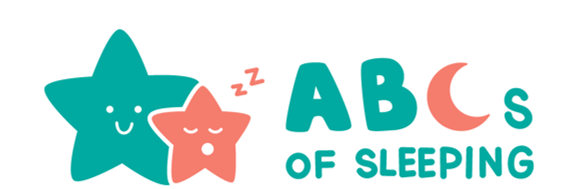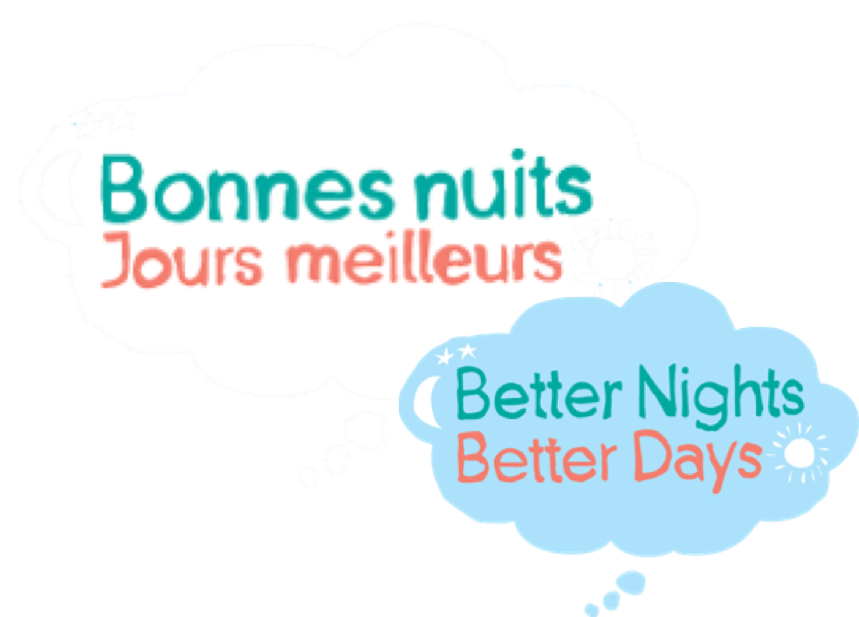
Why is the program needed?
Many school-aged children do not get the recommended amount of sleep. This is particularly concerning as we know that insufficient sleep is associated with poorer physical, mental, and emotional well-being.1, 2 Most children do not receive intervention for these sleep problems due to barriers that make it hard for parents to access intervention. An accessible way to deliver sleep health care is by utilizing smartphone applications “apps” (mHealth) as 85% of Canadians have access.3 Currently, there are no evidence-based sleep interventions apps available to parents of school-aged children. To address this, our research team has developed an app titled the ABCs of SLEEPING, which is based on the mnemonic developed by Dr. Corkum and trainees to represent the key components of healthy sleep practices:
Age-appropriate Bedtimes and waketimes with Consistency, Schedules, Location, Electronics, Exercise & diet, Positivity, Independence when falling asleep, Needs met during the day, all equals Great sleep.
What is the ABC's of SLEEPING program?
The content of the app is based on the ABCs of SLEEPING mnemonic. It was designed to provide parents with evidenced-based assessment (“check-in” feature) and sleep recommendations (“sleep tips” feature) about healthy sleep practices. When using the intervention, parents first complete a “check-in” to assess their child’s sleep practices. Once completed, a “sleep report” is produced detailing what areas of healthy sleep practices are going well and which areas need work. To deliver this information, colour coding is used. Sleep areas that don’t need work are colour coded as green, those areas that need some work are colour coded as yellow, and those areas that are high priority are colour coded red. This colour coding system lets parents know what sleep tips will be the most helpful to work on first. In addition to the “check-in”, “sleep report”, and “sleep tips” features, this intervention also has a “to do list” feature that allows the parents to decide what areas they would like to focus on first. This provides an organizing system for parents to use and helps them keep track of the progress that they have made.
What is the research that supports this program?
So far, we have conducted a systematic review, usability study, and feasibility studies. The systematic review4 established the evidence-base for the strategies included in this program (e.g., use of electronics, sleep location, etc.) The usability study5 established the intervention as highly user-friendly, but requiring some modification to increase usability (e.g., streamlining the sleep tips, improving navigation). Following modifications, a feasibility study6 was conducted and found that parents rated the revised app to be highly acceptable; however, implementation (use) of the app was less than desirable (e.g., not daily). Building from participant feedback, the app was further modified to improve implementation (e.g., a “to-do list” feature was added).
Currently, we are conducting a pilot randomized control trial (RCT) to evaluate the preliminary effectiveness of this program and to make important estimations to prepare for a full-scale RCT (e.g., examining recruitment potential, dropout rate, retainment, and sample size estimations). Concurrently, an implementation study is being conducted to understand how the app will operate in the “real world” by examining the demand for the app (i.e., who would use the app), integration (i.e., when and how users would search for the app), and practicality (i.e., barriers and facilitators to using/recommending the intervention).
Overall, the ABCs of SLEEPING app shows strong potential to provide effective and accessible sleep intervention for school-aged children. Our final research will involve full scale effectiveness testing. If the app is found to be effective, we plan to scale out this program so that it can be used by families across Canada. We are also planning to adapt the app for other populations such as parents of babies, as well as for adolescents and adults.
References
- Matricciani, L., Paquet, C., Galland, B., Short, M., & Olds, T. (2019). Children’s sleep and health: A meta-review. Sleep Medicine Reviews, 46, 136-150.
- Dewald, J. F., Meijer, A. M., Oort, F. J., Kerkhof, G. A., Bögels, S. M. (2010). The influence of sleep quality, sleep duration and sleepiness on school performance in children and adolescents: A meta-analytic review. Sleep Medicine Reviews, 14, 179-189.
- Statistics Canada. (2023, January 25th). Telecommunications: Connecting Canadians. Retrieved March 7th, 2023, from https://www.statcan.gc.ca/en/subjects-start/digital_economy_and_society/telecommunications
- Allen, S. L., Howlett, M. D., Coulombe, J. A., Corkum, P. (2016). ABCs of SLEEPING: A review of the evidence behind pediatric sleep practice recommendations. Sleep Medicine Reviews, 29, 1-14.
- Howlett, M. H., Jemcov, A., Adams, A., & Corkum, P. (2020). ABCs of SLEEPING tool: Improving access to care for pediatric insomnia. Clinical Practice in Pediatric Psychology, 8, 1-12.
- Jemcov, A., Keys, E., Corkum, P. (2021). Evaluating the feasibility of the ABCs of SLEEPING mobile application: Exploring implementation, acceptability, and limited efficacy. Clinical Practice in Pediatric Psychology, 9, 180-191.
